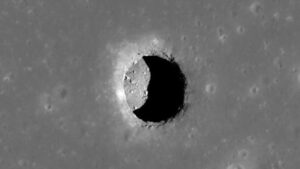The James Webb Space Telescope (JWST) has pierced the vacuum of deep space again, and unlocked another spectacular discovery beyond the pale.
Astronomers aiming the telescope into the famous Orion Nebula found what look like pairs of huge planets that defy the laws of physics.
The JWST found about 80 of the Jupiter-sized planets floating in space, gravitationally detached from any star. They appear to be “moving together,” BBC News reported. And with the typical astronomic zeal for acronyms, they’re called “JuMBOs” — Jupiter Mass Binary Objects.

JuMBOs. Photo: NASA, ESA, CSA, McCaughrean, Pearson
Escapees
Astronomers now think it’s most likely the planets were born near stars, but later escaped into the open range.
“Gas physics suggests you shouldn’t be able to make objects with the mass of Jupiter on their own, and we know single planets can get kicked out from star systems. But how do you kick out pairs of these things together?” Mark McCaughrean, the European Space Agency’s (ESA) senior science advisor, told BBC News. “Right now, we don’t have an answer. It’s one for the theoreticians.”
The Orion Nebula, or M42, is one of the closest and most productive star nurseries to our galaxy. It’s the strong, ball-shaped blur of light at the end of Orion’s “sword.” It is several light years wide and it owes its brightness to four central stars called the Trapezium.
View this post on Instagram
Thousands of stars in an amazing range of sizes surround the Trapezium. Stars from 40 times more massive than the sun down to less than 0.1 times its size twinkle in the Nebula.
But the fact that it harbors these unusual gas giant systems has drummed up new interest.
Dr. Heidi Hammel, a multidisciplinary scientist on JWST who did not join the survey team, spoke to the potential the discovery represents.
She says that no existing models of planetary system formation predict the ejection of binary pairs of planets.
“But…maybe all star formation regions host these double-Jupiters (and maybe even double-Neptunes and double Earths!), and we just haven’t had a telescope powerful enough to see them before,” Hammel said.
You can explore this new discovery and the whole Orion Nebula on ESASky, the space agency’s interactive tool.






